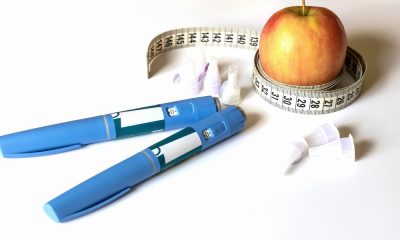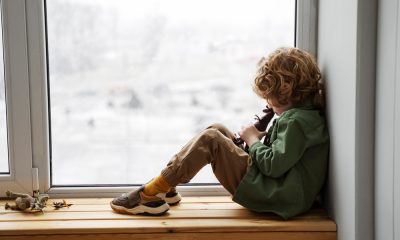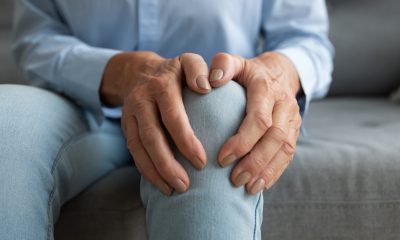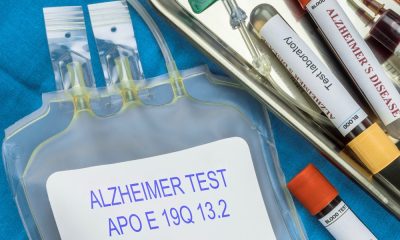Insights
Why technology-enabled care is essential to reduce the care gap

Andrew Davies, CEO of RWG Mobile, discusses how preventing long-term conditions through technology-enabled care is essential to reducing the care gap.
The COVID-19 pandemic changed not only the way we live our day-to-day lives, but the way we view and use healthcare.
The belief that the best care was provided face-to-face and involved a mandatory walk to the doctor’s surgery had to be reevaluated – care could now be provided online, in our homes, and it did not need us to go anywhere.
The advance and, above all, the acceptance of digital has naturally led to the question: what now? What path must healthcare and social care take to remain sustainable, practical, and compassionate for both short-term patients and people with chronic illnesses?
Tech advancement has been profound on so many levels, especially when it comes to sensors – home blood pressure monitors and pulse oximeters, single-lead home ECG devices – used to check sinus rhythm and atrial fibrillation – glucose monitoring, and of course – smartwatches.
Medical wearables are all around us facilitating, to an extent, remote monitoring. But what is the missing link between advanced sensor tech and true digital care?
The answer is integration. It is essential for caring organisations to implement technology-assisted care to address the care gap and reduce the likelihood of preventable long-term chronic and debilitating conditions – especially within the population of older people.

Elderly woman talking with a doctor while holding hands at home and wearing face protective mask.
Despite the proliferation of tech sensors that facilitate monitoring, the lack of an integrated care platform is a setback to achieving digital care that extends older people’s independence.
Single point applications are useful in gathering data. However, they fail to pull it all together and support medical professionals in drawing a holistic picture of the service user’s health.
Technology can notice and measure a change in a person’s behaviour but can’t account for other factors that may be affecting their daily routine: for example if they are ill, or just feeling a bit low or lonely.
That’s why there is a need for an integrated platform that can contribute to monitoring, analysing, and improving the well-being and independent living of the ageing population.
In order to achieve that connected network, that integration, healthcare and social care need to embrace a new kind of digital platform: one that brings together all the information from sensor tech and generates insights that in turn help power new workflows and interventions.
Not only will it provide masses of specialised data, it will connect the cared-for, the carers and the kinship carers (family and friends) – everyone gets to sit at the table and improve communication between all parties.
The generic term for this is Health-Platform-as-a-Service (HPaaS) – and this is the direction innovative healthcare must head for.
Falls and fall-related injuries class as a common and often serious problem for older people.
In England alone in 2021, there were more than 216,000 emergency hospital admissions in the 65+ age group. The annual costs for addressing these falls and resulting injuries for the NHS is estimated at £2.3b.

Older woman using laptop in an online consultation with her doctor.
Let’s play through some scenarios to see how an integrated platform can enable reactive and proactive treatments.
Imagine that a vulnerable person has a fall at home, a sensor can detect the fall and the platform can automate action.
A first step might be to initiate a video call with a carer, popping up a familiar face on a standard TV set. The next might be a call to a paramedic or securing physical help from friends and neighbours. Then, the professional carers can analyse the data collected before, during, and after the fall to find the cause for the fall – maybe low blood sugar or abnormal blood pressure?
Our conversations with medical professionals have also indicated the need for proactive technology – one that anticipates and prevents crises.
Movement sensors, locations awareness technology, collection of patterns, such as understanding heating and lighting behaviours, supplementary information from wearables including heart rate, oxygen levels and blood sugar levels and pop-up quizzes about mood and medication can be collected and analysed with the help of AI to portray a detailed wellness picture of the cared-for individual.
Actions can then occur – prompt a video call from a professional or family member, for example. That could not only help individuals with their medical conditions, but will provide a way to combat loneliness – a serious and challenging problem for elderly people who live independently.
Health platforms provide a unique service: it’s a connected care community, where people are taken care of digitally, but are simultaneously provided with means to communicate with kinship carers and participate in social events organised by professional carers.
It is vital that remote patient management technology must enable support for people in the community to self-manage their long-term health conditions to achieve the best outcomes for their health and well-being and to reduce the care gap.
Health platforms are a valuable toolbox that brings remote care to another level.
News
Childhood loneliness linked to increased risk of dementia, study finds
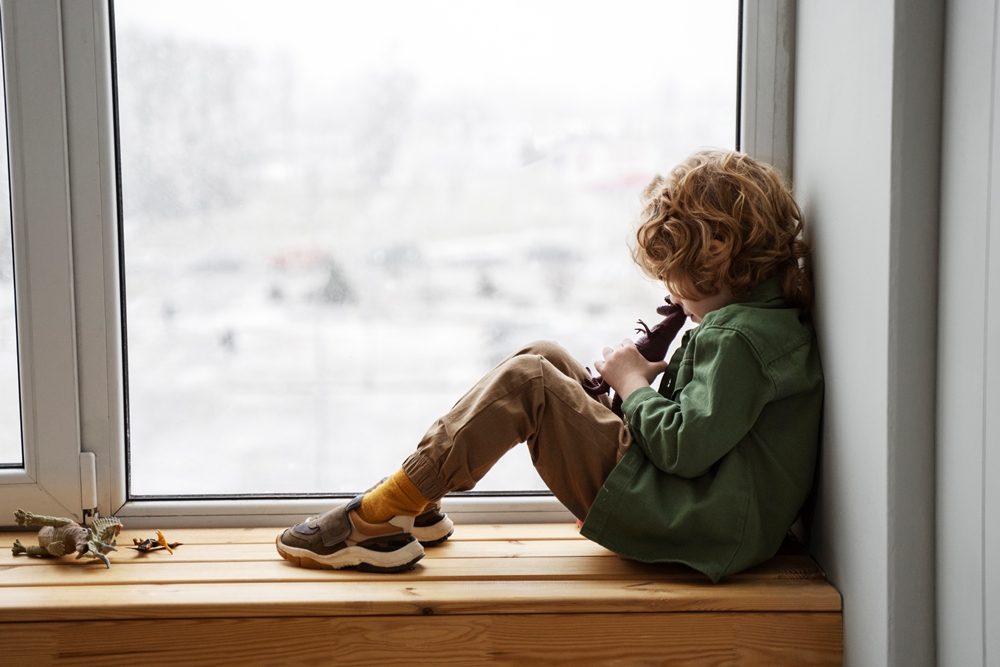
Childhood loneliness increases the risk of dementia in later life, according to new research.
Adults who recalled being lonely and without a close friend in childhood faced a 41 per cent higher risk of developing dementia, even if they were no longer lonely as adults.
People who frequently felt lonely without close friends during youth showed accelerated cognitive decline — a worsening of memory and thinking — and started middle age with lower scores on these skills.
Researchers from universities in China, Australia and the US, including Harvard and Boston universities, analysed data from 13,592 Chinese adults tracked from June 2011 to December 2018.
The critical factor was the subjective feeling of loneliness itself. Those who reported often feeling lonely as children had a 51 per cent higher dementia risk, even if some had close friends.
However, those who only lacked close friends but did not feel lonely showed no significant difference in risk.
Nearly half of roughly 1,400 adults in the study reported being lonely and without close friends during childhood.
The 4.2 per cent who experienced both faced the highest risk of cognitive decline.
The link to dementia remained strong even for people who were no longer lonely in adulthood, suggesting early-life isolation can have lasting effects on brain health.
During childhood, the brain develops rapidly and is vulnerable to harm. Loneliness acts as a chronic stressor, flooding the developing brain with harmful hormones that can damage memory centres, and it reduces stimulation from social play and peer interaction that helps build robust neural networks.
A separate 2024 study of more than 10,000 older adults found that specific childhood hardships — including poverty, disruptive home environments or parental addiction — were directly linked to poorer cognitive function later in life.
Youth loneliness appears to be rising, partly linked to widespread social media use.
Among girls, 64 per cent aged five to seven, 67 per cent aged eight to 10, and 73 per cent aged 11 to 13 reported feelings of loneliness last year. More than a quarter of boys aged 11 to 17 in the US report feeling lonely.
Children face growing social isolation, with one in four Americans now eating every meal alone — a rate that has surged by over 50 per cent since 2003. Sharing meals with friends and family helps build bonds and positive memories in youth.
Fewer children are playing outside or joining team sports.
A recent study reported that one in three children do not play outside on school days, and one in five do not do so even at weekends.
The 2024 research found a direct, dose-dependent relationship between childhood adversity and cognitive problems in adults — the greater the early trauma, the greater the later risk.
For each significant increase in early trauma, individuals faced an eight per cent higher risk of daily memory issues and scored lower on objective tests of mental speed and focus.
News
Don’t miss you essential monthly agetech update

Your essential monthly update on agetech’s progress
Welcome to your monthly snapshot of the facts, figures, opinions, trends and challenges shaping the development of agetech.
Our new monthly tracker report aims to provide an concise update for busy agetech professionals on the many factors influencing your work.
Here you will find a concise breakdown of deals, developments and opportunities from the last 30 days; and insight and opinion from leading thinkers in the field.
We hope you find something useful and/or inspiring below – and welcome any feedback about what else you’d like to see included.
News
Snoring, silence, and the menopause taboo: The hidden health crisis affecting millions

By Professor Ama Johal, clinical lead and dental sleep expert at Aerox Health
During menopause, it’s very common for women to notice significant changes to their sleep patterns and experience things like restless nights, loud snoring, or simply waking up feeling exhausted.
What most don’t realise, however, is that these symptoms can signal something far more serious – obstructive sleep apnoea (OSA), one of the most impactful and consequential sleep-related breathing disorders.
Women across the world are unknowingly fighting an uphill battle. Around 90 per cent of females with moderate to severe sleep apnoea remain undiagnosed.
This collective lack of awareness is due to a plethora of factors including archaic taboos around the subject and lack of education or omission of menopause in sexual education.
Ultimately, this combination leaves women underprepared and vulnerable to the biological, social and medical realities associated with the menopause.
Now more than ever, we must confront this silence head-on and recognise the hidden sleep crisis affecting so many women globally and the opportunity to address it.
The hidden sleep crisis
Snoring that develops or worsens during menopause can progress into OSA due to a decline in estrogen and progesterone which reduces muscle tone in the throat and in turn makes the obstruction or collapse of the airways more likely during sleep.
Yet this link between menopause and sleep disorders remains largely overlooked, leaving millions of women undiagnosed, untreated, and unaware that their sleep struggles are more than just “part of getting older”.
In my practice, I see the consequences of this misunderstanding far too often.
I hear from many female patients who have been suffering in silence, without the knowledge that they could seek help. In fact, I often encounter the common misconception that snoring is a man’s issue.
This preconceived notion perpetuates a persistent gender bias in sleep-related health research.
As ENT consultant and sleep surgeon at University College London hospitals, Ryan Chin Taw Cheong recently highlighted, the development of snoring is reason enough to consult your doctor. It’s time for this pervasive issue to emerge from the dark.
So why don’t women seek help?
When considering why many women do not seek help for their symptoms, there are two overarching reasons.
Firstly, the information and knowledge is not widely available for sufferers to realise that snoring can be a medical issue which can be assessed and subsequently readily treated.
Secondly, there is a potent stigma surrounding both the menopause and snoring which is an inhibiting factor amongst sufferers, discouraging open discussion.
Perhaps unsurprisingly, menopause is not included in traditional sex education in schools. Being unaware of what is ‘normal’ and what could require medical attention is widespread amongst my patients with sleep disorders, yet this information is not freely disseminated outside of clinics.
Unfortunately, cognitive fog and irritability – symptoms of snoring and obstructive sleep apnoea – are too often written off as stress, anxiety or ‘just the menopause’.
Avoiding sharing symptoms with medical providers, combined with online misinformation, often results in individuals suffering in silence or worse, turning to unregulated miracle menopause cures that exacerbate the risks of undiagnosed OSA.
These so-called ‘cures’ reinforce the harmful notion that the menopause is a defect which needs to be fixed rather than a natural life stage.
The health costs of ignoring snoring
A breadth of research links untreated OSA to cardiovascular disease, hypertension and cognitive decline.
However, aside from the medical risks, snoring and sleep apnoea can have profound social and emotional consequences.
For women, the shame in snoring, a symptom often mischaracterised as a ‘male issue’, can significantly affect self esteem and mental health.
Partners may also suffer if the snoring is disruptive to their sleep, in some instances causing rifts in relationships and a phenomena known as ‘sleep divorces’ (sleeping in separate beds or rooms).
In fact, according to a recent study commissioned by 32Co, 47% of recently divorced Brits cite interrupted sleep linked to snoring or sleep disorders as contributing to their relationship breakdowns, with 85 per cent believing ‘sleep divorces’ contributed to ultimate separation.
Sleep specialists seek to manage and monitor the symptoms of sleep disorders and OSA to minimise disruption to an individual’s personal and public life.
Screening menopausal women for OSA is a preventative measure which leads to informed patients. It is not simply about getting better sleep but about the long-term health outcomes.
Breaking the silence: what needs to change
Drawing on the stories of those I meet in my clinic, I would like to outline five steps that we can take to address this silent epidemic.
First, the menopause and associated symptoms should be included in a comprehensive sex and health education.
This could be provided both in schools’ curricula and made readily available at health services catering to adults.
Second, throughout the course of history women’s issues have been chronically underserved.
More resources can be funnelled into conducting research to help us better understand the impact of the menopause on women’s physical and mental health.
Future research would also help to neutralise the gender bias of previous studies.
Third, launching public health campaigns and workplace initiatives to encourage employers to recognise sleep disorders as a significant element of menopause will help build awareness and reduce the impact of stigmas.
Fourth, myth-busting, shattering taboos, and normalising discussion about the menopause will be key.
We must view snoring as a gender neutral issue rather than a male stereotype and denounce harmful rhetoric and jokes that perpetuate stigma.
Fifth, we must better equip more localised healthcare providers up and down the country to both diagnose and treat OSA effectively.
Sleep disorders are not niche issues but a major public health concern with potentially severe consequences.
Quality of life amongst my patients is inextricably linked with sleep quality.
Recognising the relationship between snoring and OSA and the menopause is not simply about pathologising a natural stage of life, but providing women with the information, respect and medical care they deserve.
Only through more transparency and collaboration amongst researchers, educators and clinicians can we hope to close the gender gap in sleep medicine and bring this hidden crisis to light.

 News1 month ago
News1 month agoCholesterol-lowering drugs could reduce dementia risk

 Research3 weeks ago
Research3 weeks agoResearch reveals potential ‘two-in-one’ treatment for diabetes and heart disease

 News2 months ago
News2 months agoStudy finds link between circadian rhythms and bone resorption

 Wellness4 weeks ago
Wellness4 weeks agoMediterranean diet reduces painful inflammation, study finds

 News1 week ago
News1 week agoCommon diabetes drug may be cancelling out exercise benefits

 Markets & Industry1 month ago
Markets & Industry1 month agoGlasgow clinic launches Alzheimer’s detection test

 News3 weeks ago
News3 weeks agoUK aims for 92 per cent dementia diagnosis by 2029

 Research5 days ago
Research5 days agoOne in 20 children has high blood pressure, study finds


